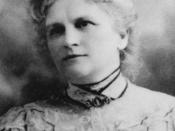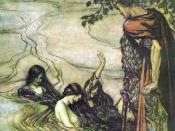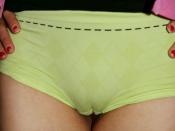Sebastian Novoa Gam Desiree's Baby Foreshadowing and the development of the ultimate concealed irony.
In this short essay I will unfold how the sense of forshadowing employed in Kate Chopin's story develops and eventually turns it into the ultimate concealed irony. In a sense Desiree's Baby is a story that reveals itself prematurely throughout the narrative which allows us to guess its conclusion at several moments when the narrative voice includes literary devices to help the narrative flow.
But how does this foreshadowing help the reader to infer the ending?
One of the first moments of these foreshadowing episodes is the fully detailed description of L'Abri atmosphere. The first hint of this foreshadowing hits the reader when Madame Valmonde arrives to the plantation "When she reached L'Abri she shuddered at the first sight of it, as she always did." This statement makes us redirect our attention to obscurer matters, why is it that Madame Valmonde shudders? The harsh and cold touch that L'Abri's atmosphere represents is perhaps linked to the fact that for many years the land has been without the touch of kindness that a woman, in this case a mistress, gives.
Accustomed to the harsh treatment of young Aubigny the workers of the plantation "had forgotten how to be gay" Why is it that the workers had forgotten how to be gay? This could be answered by the second glimpse that reinforces the theory of the literary devices. This characterization is set on the personality and description of the complexion of Armand. We can make several assumptions towards the theme of race and trouble that plague the story but in the most obvious assumptions lies our next foreshadowing.
"Armand's dark, handsome face had not often been disfigured by frowns since the day he fell in love with...


